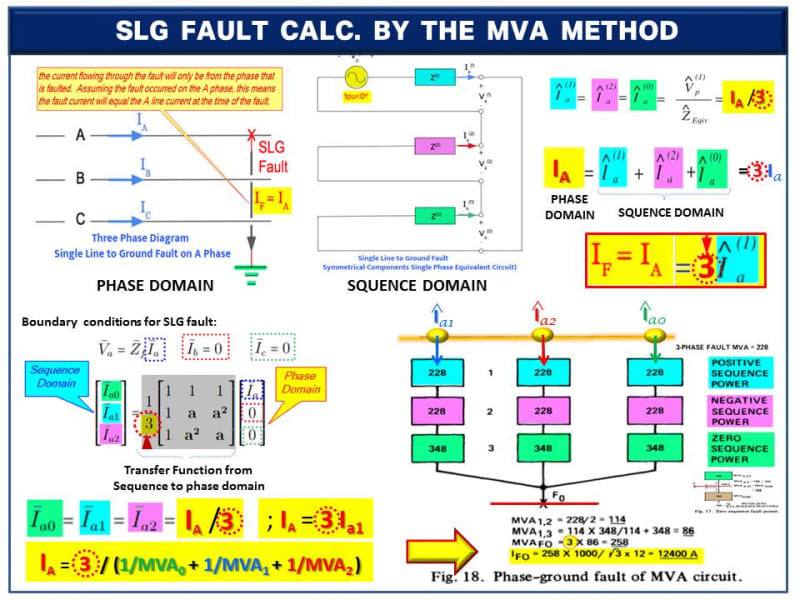Studying the MVA method for its simplicity. Understand its limitations, but for quick calc to determine min AIC of equipment seems like a good approach.
I can follow and comprehend the method for 3 phase faults. But I am having some difficulty with phase to phase, and phase to ground.
Phase to ground fault:
MVAsc=3/(1/MVA1 + 1/MVA2 + 1/MVA0)
I understand where positive, negative, zero MVA is derived. But, I don't understand why it is multipled by 3. Is it looking at each of the 3 phases going to ground at the same time, so its 3 cables in parallel? Or is it just one phase to ground? If latter, is it normal to have higher phase to ground Isc than three phase Isc?
If the ground fault is on a wye system, say 480/277, and I'm looking for one phase to ground, after arriving to the MVA do I use Vll (480) or Vln(277) to calc Isc?
For phase to phase fault:
MVAsc= (Sqrt 3 x MVA1)/2
I assume the Sqrt 3 is reference to 3 phase, and the 2 is the two phases, but don't comprehend how this is derived. Anyone have a good explanation?
thanks, all comments appreciated.
I can follow and comprehend the method for 3 phase faults. But I am having some difficulty with phase to phase, and phase to ground.
Phase to ground fault:
MVAsc=3/(1/MVA1 + 1/MVA2 + 1/MVA0)
I understand where positive, negative, zero MVA is derived. But, I don't understand why it is multipled by 3. Is it looking at each of the 3 phases going to ground at the same time, so its 3 cables in parallel? Or is it just one phase to ground? If latter, is it normal to have higher phase to ground Isc than three phase Isc?
If the ground fault is on a wye system, say 480/277, and I'm looking for one phase to ground, after arriving to the MVA do I use Vll (480) or Vln(277) to calc Isc?
For phase to phase fault:
MVAsc= (Sqrt 3 x MVA1)/2
I assume the Sqrt 3 is reference to 3 phase, and the 2 is the two phases, but don't comprehend how this is derived. Anyone have a good explanation?
thanks, all comments appreciated.

